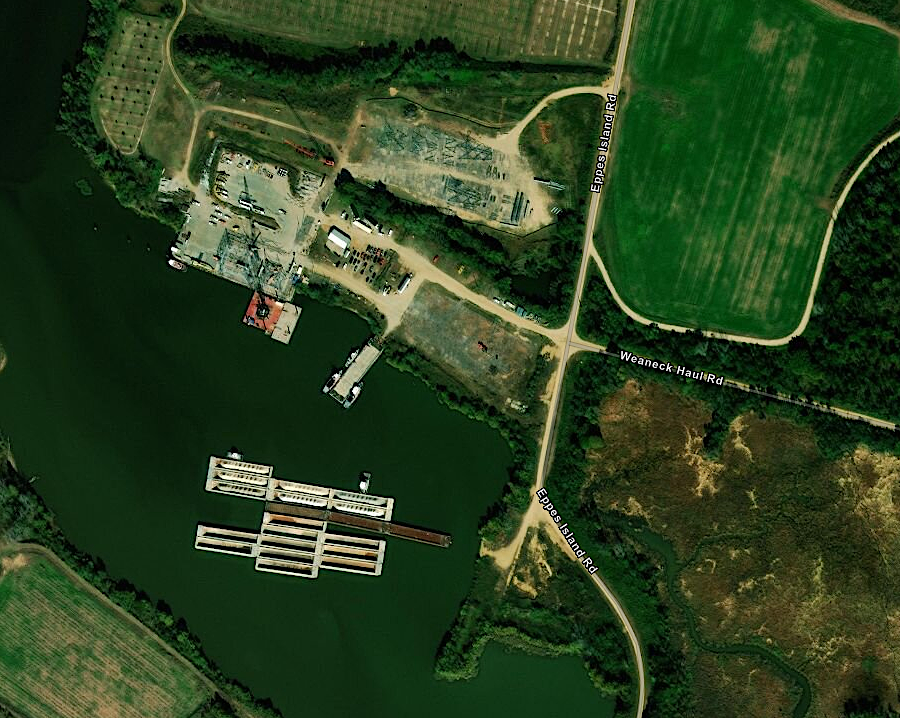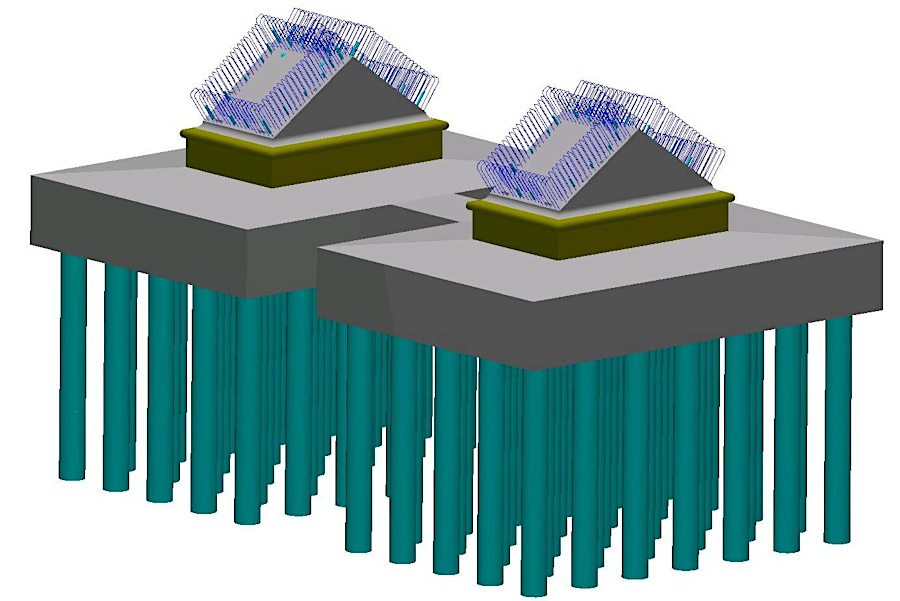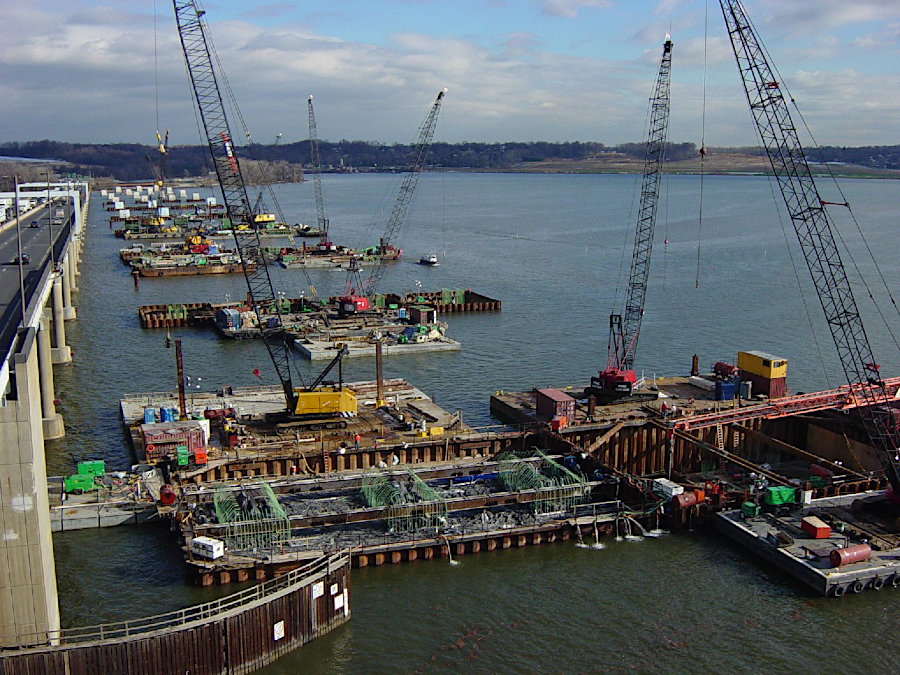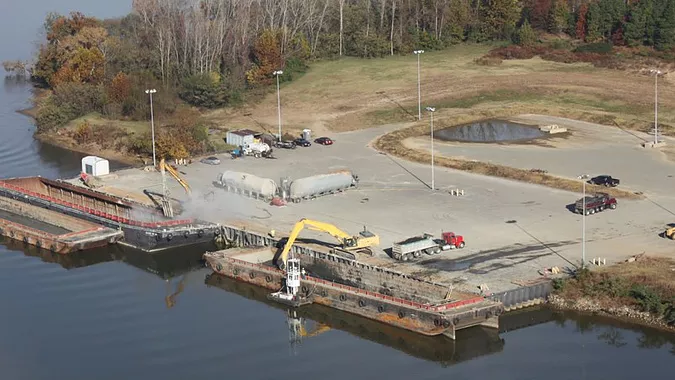
dredge spoils from the Potomac River were barged from the replacement Woodrow Wilson Bridge to Weanack and used to fill a sand/gravel pit
Source: ESRI, ArcGis Online

dredge spoils from the Potomac River were barged from the replacement Woodrow Wilson Bridge to Weanack and used to fill a sand/gravel pit
Source: ESRI, ArcGis Online
In 2000-2001, 500,000 cubic yards of material were dredged from the Potomac River for construction of a new Woodrow Wilson Bridge. New foundations were required for the new spans.


pilings were driven into the Potomac River sediments to support the new spans
Source: Virginia Department of Transportation, Woodrow Wilson Bridge Project (July 17, 2007)
The dredge spoils excavated from the bottom of the Potomac River were barged to Charles City County for disposal. The material was placed in a former sand and gravel pit, on what was once part of the Shirley Plantation. Relatively dry material was removed from the barges by excavators and transported via trucks for spreading. Wet spoils were pumped through a pipeline to the disposal site. What was a "waste" at the Woodrow Wilson Bridge became a useful component of soil at Weanack, and corn crops were planted in it.1

relatively dry dredge spoils were dug out of barges, placed in trucks, and then transported to the sand and gravel pit
Source: Weanack Land

sediments dredged from the Potomac River ended up in Charles City County
Source: Virginia Department of Transportation, Woodrow Wilson Bridge Project (July 17, 2007)
Because the sand pit at Weanack was unlined, it could not be used for sediments excavated by boring machines to construct new tunnels for the Chesapeake Bay Bridge-Tunnel and the Hampton Roads Bridge-Tunnel. The boring machines used petroleum-based additives to lubricate the cutting head and make it easier to move the excavated material. All excavated material which exceeded 50 milligrams of Total Petroleum Hydrocarbons (TPH) per kilogram of soil was ineligible for ocean dumping, and also ineligible for disposal in landfills without a liner.2